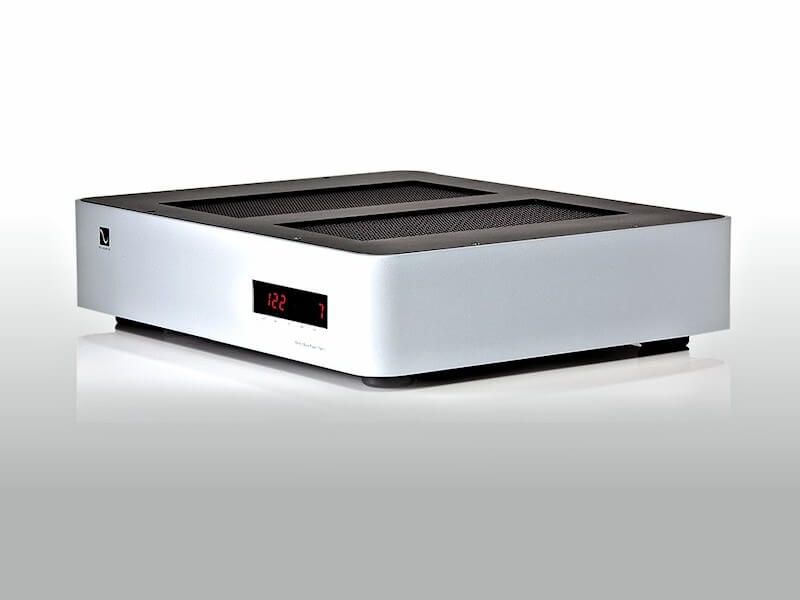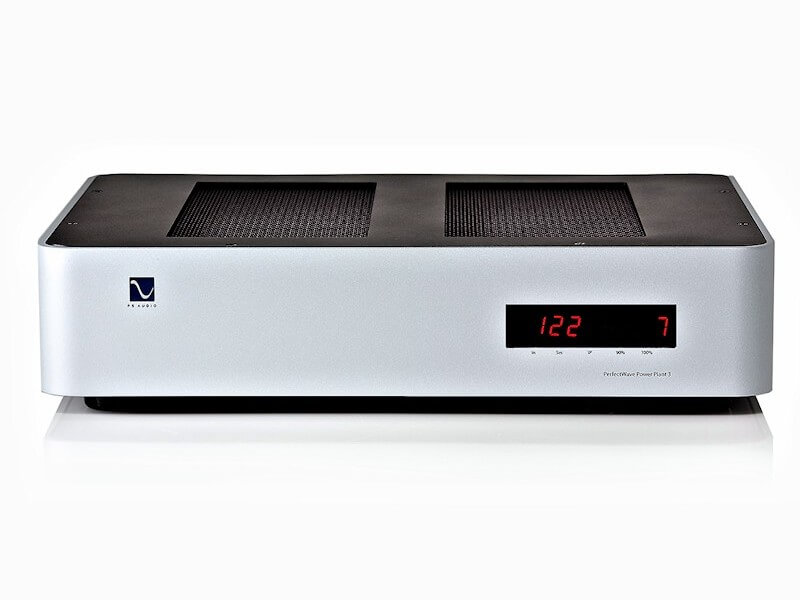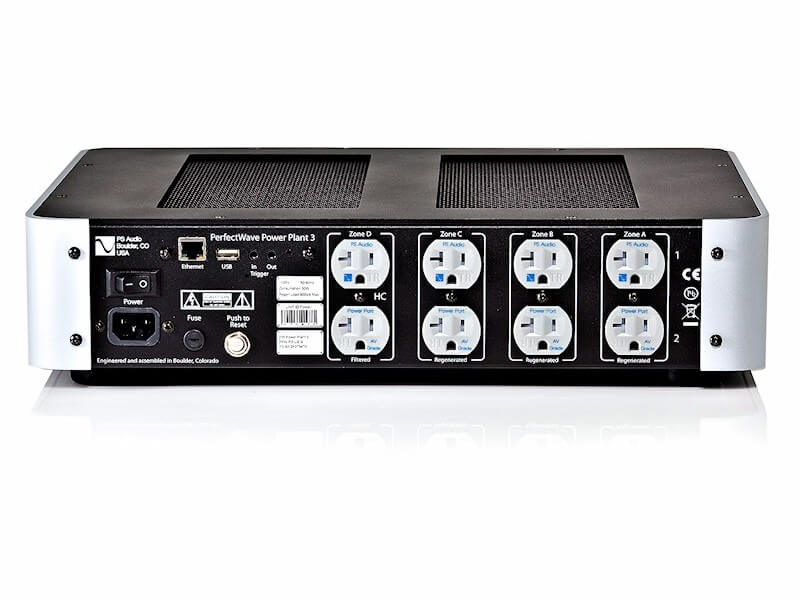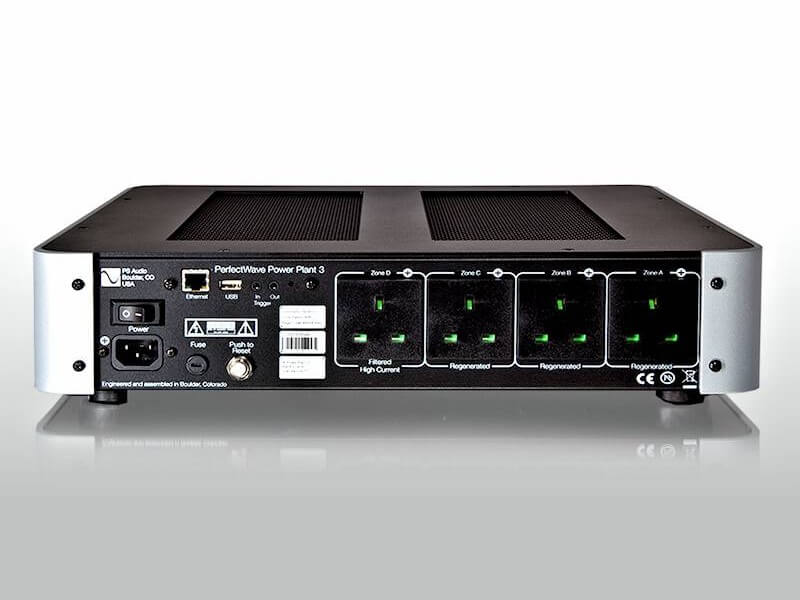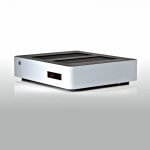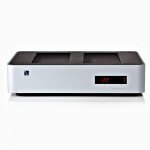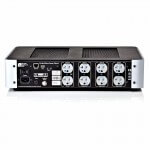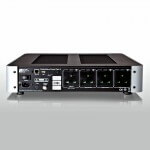The P3 is the smallest of our personal power generating stations, but don’t let that distinction fool you. The P3 produces pure and perfect AC and is the power source of choice for almost any size system. Smaller than the P5, this workhorse can be the foundation on which you build your system when a P5 isn’t in the cards.
The P3 takes in the old AC and outputs new, rebuilt power with 3 separate regenerated zones and a 4th, high current filtered zone, the P3 can handle any size system you want to power. From the biggest power amplifiers to the smallest pieces of source equipment, this combination of regenerated AC coupled with a high current unrestricted filtered zone will work magic on your system’s performance.
With your system powered directly from the output of the P3, dynamics and openness are unquestioned. A Power Plant is clearly one of the most important pieces of audio equipment you can own – building a firm and reliable foundation for your system that will serve you for years to come.
How it works:
The PerfectWave P3 Power Plant takes your incoming AC power and converts it to DC, similar to what comes out of a battery, and then with patented PS Audio technology regenerates and produces new sine-wave-perfect, regulated high current AC power. In the process of regeneration any problems on your power line such as low voltage, distorted waveforms, sagging power and noise are eliminated.
Since the introduction of Power Plant regenerator technology in 1997, many reviewers as well as many thousands of customers around the world have experienced for themselves just how critical and unique a Power Plant is; the term accessory doesn’t begin to describe its value. One of our customers, a long-time reviewer for one of the established audio journals, remarked that “Its the first component anyone serious about high-quality audio should get.â€
It’s good to understand the importance of power in a high-end audio system. Everything we see and hear through our system is really the power from our home’s wall socket manipulated to make music through our speakers by our electronics. The quality of that power is critical to the success of any high-end system.
Regenerated power is what separates the Power Plants from power conditioners:
The power that comes out of your home’s wall socket is unregulated, variable and prone to distortion. Inserting a standard power conditioner only makes that situation worse or has little remedy for the problem.
Only a regenerator, like that found in the Power Plant, can address the major issues of our home’s power.
To handle the challenge, inside each Power Plant is a massive power amplifier that delivers the new and distortion free AC to your equipment. The power amplifier is fed from a low distortion sine wave generator and controlled from the front panel touch screen of the Power Plant.
The internal power supply stores enough energy to allow the power amplifier inside the Power Plant to deliver massive amounts of energy to your equipment. Peaks of more than 70 amps can be delivered when a typical home wall receptacle can only provide 15 amps.
MultiWave:
One of the major advantages of generating new power from old is the ability to also generate new waveforms that enhance the capabilities of the power feeding your equipment.
MultiWave extends the peak charging time of the sine wave so connected equipment has more energy storage and less power supply ripple. Turning MultiWave on is like adding a larger capacitor bank to your connected equipment’s power supply. The audible results are dramatic and produce a bigger soundstage that sounds far more natural than with a simple sine wave.
CleanWave:
CleanWave is another unique feature to the Power Plants and helps connected equipment demagnetize their transformers. AC power is never quitesymmetrical and the small asymmetry that occurs can magnetize connected power transformers.
Activating CleanWave from either the Power Plant remote control or front panel can remove this problem from connected transformers resulting in far cleaner audio.
100 times lower output impedance:
Low output impedance is critical to maintaining a dynamic and robust presentation. Dynamic sags in the power line occur whenever your power hungry equipment demand power to drive your loudspeakers or projector causing noticeable degradation in the performance. Placing anything in the path of the power, like a power conditioner, only worsens the problem.
A Power Plant, on the other hand, regulates the power and provides a constant output irregardless of the dynamic demands of power hungry equipment or your neighbors. When your power amp is asked to produce loud orchestral levels you want to make sure it has all the power it needs. Power Plants have such low output impedance that even the hungriest of amplifiers won’t be starved for clean AC power.
The results of feeding your equipment with low output impedance are dramatic:unrestrained dynamics even under the loudest passages, an open wide soundstage that does not collapse with volume and a naturalness to the music that is remarkable.
Complete protection from any power line event:
Owners who have invested in a Power Plant can rest assured their connected equipment will be safe from any power line event such as over voltage, under voltage, surges, spikes and potentially threatening problems.
The input voltage to the Power Plant is fully protected by state-of-the-art clamping devices and the output of the Power Plant is fully regulated so even large voltage swings that would normally damage connected equipment are made safe by either clamping or regulating. In most cases, connected equipment enjoys the protection and performance benefits of fully regulated power, even under extreme circumstances.
In the event of a major surge or spike, the Power Plant will automatically remove power from all connected equipment and shut itself down. When power is restored to normal, the Power Plant will safely turn all connected equipment back on in the sequence owners have set up for it.
Control from anywhere in the world:
Using any web browser or mobile device from anywhere in the world, Power Plant owners can monitor their power, schedule equipment to turn on and off days, weeks or even months in advance. Once connected to the internet the Power Plant communicates and reports its status to our servers automatically.
Owners can then go online and schedule events, check the status of the power line, the voltages and even receive email notifications if so desired. Owners can also manage all the parameters available through the web interface, including switching zones on and off, setting up auto reboot area that will ping our servers to make sure internet connectivity is maintained and rebooting the device if not, plus a host of other interactive features and events.
IR and trigger controls:
In the back of the P3 there are two mini jacks that can be assigned as either an IR input or output or a DC trigger transmitter or receiver. For the IR capabilities, the P3 can be assigned up to 15 separate IR commands for any zone and these IR broadcasts can be triggered by any number of assignable events. This helps P3 owners maintain complete control over not only the AC power, but by directly controlling that same equipment through a remote control.
If you have equipment that needs a DC trigger to turn it on or off remotely, you can assign one of the mini jacks to be either the sending or receiving unit for these commands and remotely turnon/off equipment or have that equipment remotely turn on/off the P3.
Input naming and customization:
With 4 zones available on the P3 it is important to know which piece of equipment is being powered by which zone so you can access from the web interface. On a P3 it’s easy. You can name each zone anything you wish via the online interface.
Once the outlets are named then it’s quite easy to schedule when they turn on/off or the sequence that they are powered on. For example, you may wish for all your sources to turn on first, warm up and then when you decide it’s long enough, your power amps will turn on.
Monitor your system’s heartbeat:
You can monitor your power quality of your home and the P3 with its real time distortion analyzer and power measurement features. Measure everything that’s going on affecting your system’s performance over the internet from anywhere in the world.
The P3 will monitor your power line quality and report any problems to you through the web page, text alerts or emails sent anywhere you wish. It’s up to you. The P3’s real-time and on-line measurement system includes surges, voltage levels, power usage and power quality as measured by THD (Total Harmonic Distortion) on the line.
The data is stored on our servers and available via the web interface for the P3. Customers can look at power quality over time, or drill down to specific times of day to find out if there’s a problem involving the home’s power.
Proudly Built in Boulder:
The first two modern Power Plants, the PerfectWave P5 and PerfectWave P10, were launched to fill the need for a state-of-the-art regenerator for high-end audio and video systems. After several years on the market, demand for a more affordable version of the regenerator surfaced from our customers and PS Engineering took on the task of designing a more affordable version of the P5 Power Plant.
The design goal in building a P3 was to not compromise performance in any way. Rather, it was decided to forego features and power output as a means of reducing costs. First to go would be the more expensive PerfectWave chassis and touch screen, found on the P5. Next was power and to reduce costs the design team chose a smaller power transformer, one that would produce 80% of what a P5 will do. In order to make sure our customers could still operate an entire audio or video system with a single P3 Power Plant, engineering added a High Current zone that could power even the largest of amplifiers or projectors. The HC Zone, as it became known is not regenerated power, but rather filtered and protected only.
To ensure no performance of the regenerated outputs would be sacrificed, Engineering decided to use the identical power regeneration module as found in the larger P5 Power Plant. Thus, the P3 was born. Inside it is electrically identical to the P5 Power Plant with a slightly smaller power transformer. Outside it is housed in an attractive all metal chassis with an LED display for control and communication with the user.
The P3 Power Plant is built with parts sourced at our local vendors located in the surrounding areas of Longmont and Denver. The vendors mill and finish the chassis, build our circuit boards and deliver tested, fully functioning component level subassemblies to our incoming inspection team. There every part and assembly is inspected and tested before it ever reaches the production floor.
Each and every Power Plant is assembled from the ground up in our local operation by highly skilled artisans that care about every piece that leaves our dock. With over 7,000 Power Plants operating high-end systems all over the world, we have a commitment to excellence to uphold.
We understand that each product we build is an investment our customers make in both the product and our company.

